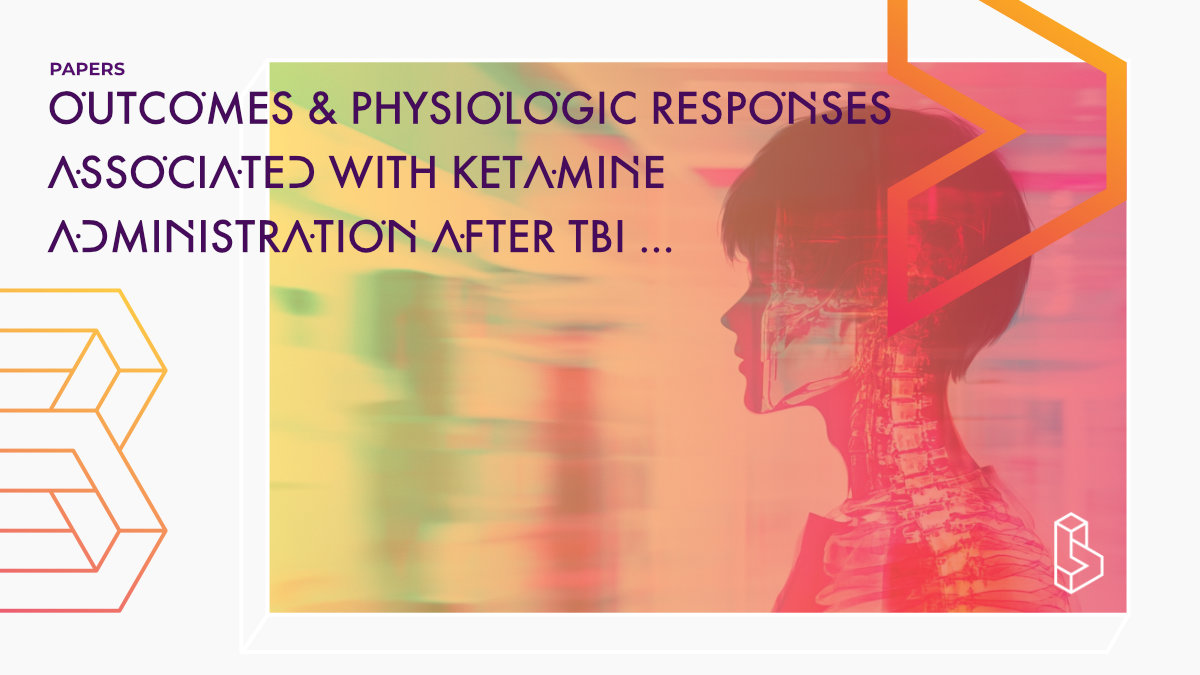This retrospective analysis (n=841) of the Prehospital Tranexamic Acid Use for Traumatic Brain Injury trial evaluates the effects of ketamine in subjects with traumatic brain injury (TBI). It finds no significant difference in mortality or disability between ketamine-exposed (15.5%) and unexposed subjects, though ketamine exposure was associated with fewer instances of elevated intracranial pressure and a lower increase in TBI protein biomarkers, despite a higher likelihood of seizure activity in the ketamine group.
Abstract of Outcomes and physiologic responses associated with ketamine administration after traumatic brain injury in the United States and Canada
“Purpose Ketamine has historically been contraindicated in traumatic brain injury (TBI) due to concern for raising intracranial pressure. However, it is increasingly being used in TBI due to the favorable respiratory and hemodynamic properties. To date, no studies have evaluated whether ketamine administered in subjects with TBI is associated with patient survival or disability.
Methods We performed a retrospective analysis of data from the multicenter Prehospital Tranexamic Acid Use for Traumatic Brain Injury trial, comparing ketamine-exposed and ketamine-unexposed TBI subjects to determine whether an association exists between ketamine administration and mortality, as well as secondary outcome measures.
Results We analyzed 841 eligible subjects from the original study, of which 131 (15.5%) received ketamine. Ketamine-exposed subjects were younger (37.3±16.9 years vs. 42.0±18.6 years, P=0.037), had a worse initial Glasgow Coma Scale score (7±3 vs. 8±4, P=0.003), and were more likely to be intubated than ketamine-unexposed subjects (88.5% vs. 44.2%, P<0.001). Overall, there was no difference in mortality (12.2% vs. 15.5%, P=0.391) or disability measures between groups. Ketamine-exposed subjects had significantly fewer instances of elevated intracranial pressure (ICP) compared to ketamine-unexposed subjects (56.3% vs. 82.3%, P=0.048). In the very rare outcomes of cardiac events and seizure activity, seizure activity was statistically more likely in ketamine-exposed subjects (3.1% vs. 1.0%, P=0.010). In the intracranial hemorrhage subgroup, cardiac events were more likely in ketamine-exposed subjects (2.3% vs. 0.2%, P=0.025). Ketamine exposure was associated with a smaller increase in TBI protein biomarker concentrations.
Conclusions Ketamine administration was not associated with worse survival or disability despite being administered to more severely injured subjects. Ketamine exposure was associated with reduced elevations of ICP, more instances of seizure activity, and lower concentrations of TBI protein biomarkers.“
Authors: Austin J. Peters, Saad A. Khan, Seiji Koike, Susan Rowell, & Martin Schreiber
Summary of Outcomes and physiologic responses associated with ketamine administration after traumatic brain injury in the United States and Canada
The use of ketamine in the context of traumatic brain injury (TBI) has historically been met with caution due to concerns about its potential to increase intracranial pressure (ICP), a dangerous condition that can arise following brain trauma. However, recent trends in clinical practice have seen a shift towards the utilisation of ketamine in TBI cases, primarily because of its favourable respiratory and cardiovascular effects. The authors highlight a critical gap in the existing literature, noting that, until now, no comprehensive studies had specifically examined the impact of ketamine on patient outcomes such as survival rates and disability levels after TBI.
This study aims to investigate the associations between ketamine administration and various outcomes in TBI patients. By analysing data from a multicentre trial, the researchers sought to determine whether the use of ketamine correlates with improved survival rates or lower disability measures. The authors hypothesise that ketamine will not be associated with worse survival or increased disability, and they also expect to observe different physiologic responses in patients receiving ketamine compared to those who do not.
Methods
Study Design
Find this paper
https://doi.org/10.20408/jti.2023.0034
Open Access | Google Scholar | Backup | 🕊
Cite this paper (APA)
Peters, A. J., Khan, S. A., Koike, S., Rowell, S., & Schreiber, M. (2023). Outcomes and physiologic responses associated with ketamine administration after traumatic brain injury in the United States and Canada: a retrospective analysis. Journal of Trauma and Injury, 36(4), 354-361.
Study details
Compounds studied
Ketamine
Topics studied
Traumatic Brain Injury
Neuroscience
Study characteristics
Randomized
Re-analysis
Bio/Neuro
Participants
841
Humans

